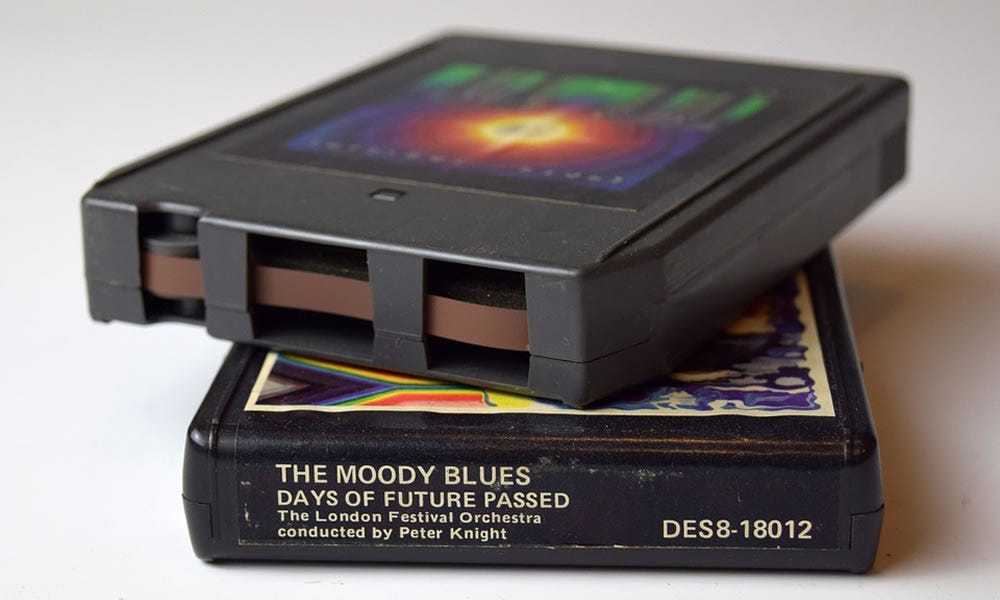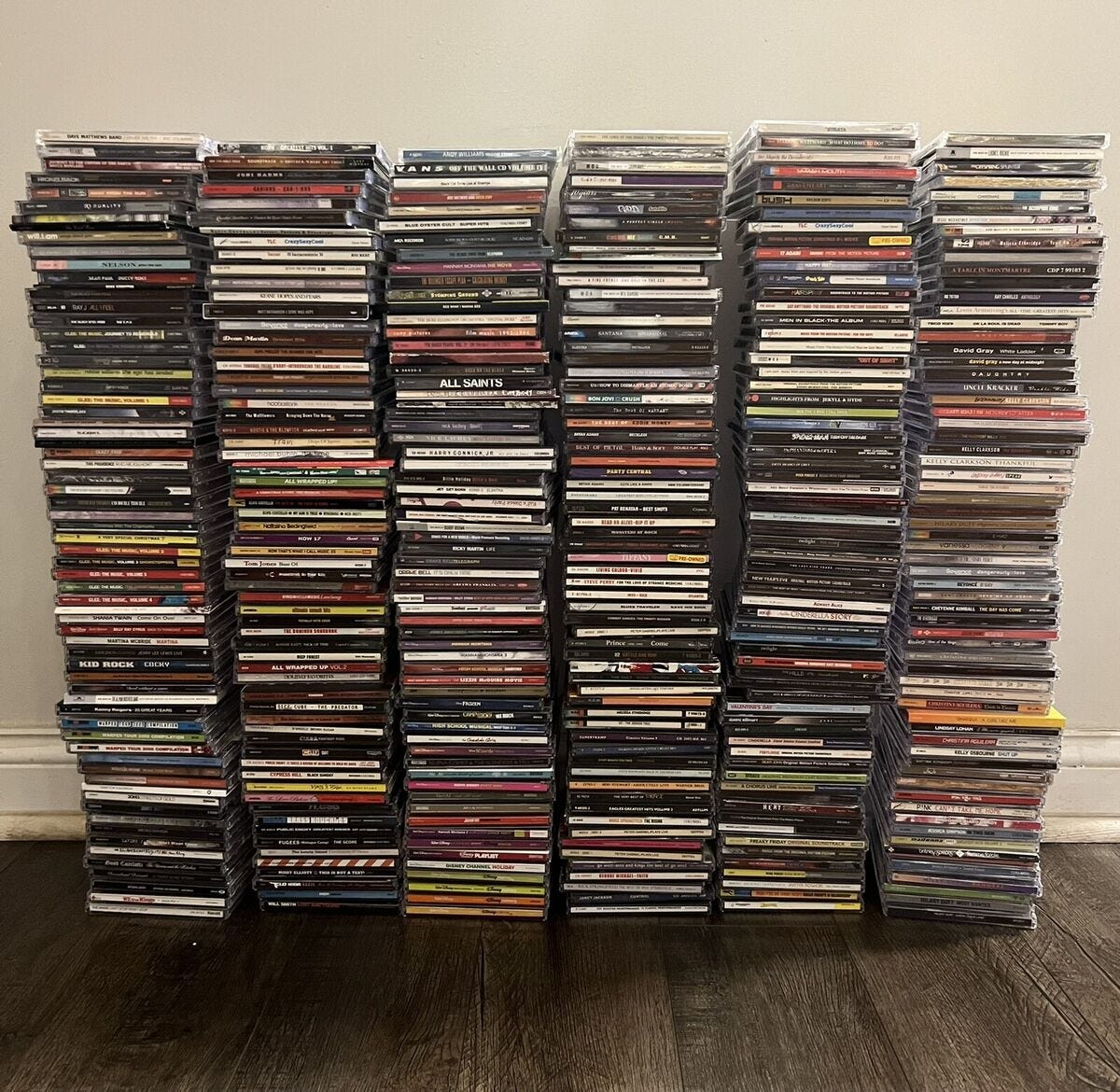Why Retro Audio Formats Were Not As Great As You Might Remember
When I was young, there were three primary ways to listen to music: records, cassettes and the radio. You heard music on the radio and if you liked it, you bought it on either an LP record or a cassette. Or sometimes both! I mostly bought cassettes and as I remember, they were $8 to $10 each. In 2025 money, that is over $20!
LP Records
Records are fondly remembered by many and have become an increasingly popular way for people to purchase music again. I never really bought much in the way of records back in the day, so there’s not much of a nostalgia factor with them for me.
In fact, I kind of don’t like them for a variety of reasons. I think I only actually owned two records growing up, both soundtracks: Return of the Jedi and Ghostbusters. I really don’t know why I had either of those on record, as everything else I owned was on cassette and then eventually CD.
Records are big and bulky. I always found them inconvenient to use and store. Playing them was a pain because you could only do it in one room with no option for portability. When side one finished, you had to get up and flip the record over to play side two, interrupting the flow.
Without the best of equipment records always had snaps, crackles and pops, especially as they aged and eventually got dust and scratches. It was actually hard for a kid to keep a record in good condition. I certainly didn’t know back then that records were meant to be stored vertically!
However, because they were so large, records did have the benefit of being a great showcase for album art. It is harder to appreciate album art these days on our small devices. Liner notes were also better on records since they had more room for details and often, though not always, would include actual inserts with lyrics or other details and photos about the album.
If you wanted to listen to a record on the go, with either a walkman, boombox or in the car, you could dub it to cassette tape. The quality of your dub depended greatly on the equipment you were using, but depending on the record’s length and tape you used, you might be able to fit an entire album on one side! The other option was to buy the album again on cassette, which was probably done more commonly than might you think.
The fact that we had to re-buy albums when they came out on new formats is likely why so many older albums have such inflated sales numbers, compared to today.
Cassettes
Speaking of cassettes, they were definitely my preferred format when growing up, at least until CDs entered the picture in the late 80s. I’m also surprised to see cassettes making a comeback because, unlike a record, I don’t think there is any benefit of a cassette these days.
Cassettes always have a background hiss, unless you are using high-quality tapes with high-end equipment. Most commercially produced stuff was not that high quality.
Cassette jams were a real problem. You had to clean your cassette player regularly or you’d eventually hear that squeal as the tape player “ate” the tape, chewing it up and getting this all tangled. If you were lucky nothing broke and a pencil could be used to wind things back up.
Being small, cassettes were great for portability. The Walkman was amazing. Being able to easily play cassettes in the car was a requirement for a teenager in the 80s. But nothing beats a phone for portability these days.
Their small size and rectangular shape meant that album covers were compromised in some way. Sometimes they were cropped, sometimes they were shrunk even further with a white border so they could retain their square record shape.
Early cassette inserts did not have much if anything printed on them, but eventually they would be expanded to fold out into a big insert with lyrics, photos and other details. Some of these inserts could get so thick that the cassette barely fit in the case along with it!
8-Track Tapes
Although a bit before my time, 8-track tapes were a thing for a while in the 60s and 70s as they were the first practical way to play music on the go. These tape cartridges were rather large and had four separate tracks containing music. They were in stereo, so each track also had a left and right track making for eight total tracks.
Technically that means that cassette tapes are 4-track tapes.
The tape in the 8-track cartridge was on a continuous loop, so it never stopped playing. This meant that albums would get chopped up, sometimes oddly, to fit the songs on the four tracks.
You could flip between any of the tracks at the push of a button, but that just meant you’d switch to the middle of a song on another track, so it was not very useful. Normally the tape would switch to the next track when it reached the end of the track it was playing.
The continue loop did mean you never had to flip anything, which was nice I guess.
These 8-track tapes were used in cars and home stereos, but I don’t remember ever seeing a boombox with an 8-track tape player in it.
Once cassettes got popular, there was no reason to keep the larger, odder 8-track tapes around and they quickly faded away.
CDs
I got my first CD player as a high school graduation present in 1988. I don’t think I ever bought a cassette after that. CDs were wonderful in most ways with amazing sound quality, reliability and the ability to easily jump between songs1. But in those early years there were not many options for playing CDs on the go.
When CD players were new, they were sensitive to skipping if the player was jostled. This meant that portable players were not really common for a while as they were expensive. I got my first CD player for a car in 1995. Before that, I would use my boombox to copy CDs onto blank cassettes to listen to in the car. This was the prime era of the mixtape!
By the mid-1990s, manufacturers had figured out the skipping problem and portable players such as the Sony Discman were cheap and plentiful. Sure, it was larger than a Walkman, but still small overall. I used one pretty regularly until I got my first iPod in 2002.
One thing I really liked about CDs was CD changers. The ones I had used a cartridge where you would insert six CDs and then insert the cartridge into the player. You could flip between CDs pretty quickly and it was a great way to queue up hours of music. I had a CD changer at home and in my car and could share the cartridges between them. Fun times!
Today
I still have my 300+ CDs stored in the basement somewhere. I long-ago ripped them to mp3 and these days I primarily stream using Apple Music. I don’t really miss those old times much as it is just so much easier to find and play what you want today, not to mention that it is way, way cheaper!
What was your preferred music format growing up?
Some CD players would let you reprogram the song order, but I don’t think I ever used that more than a couple times. It usually wasn’t worth the effort.






I started listening to music in 1990 with the cassette format. Then in 1992 the CD appeared in my life and I never stopped. Even today, in 2025, I still buy CDs. I have a collection of more than 1,100 records. For me, the physical format is the best way to listen to music. It is still a ritual to go to the record store. Look for titles, both known and unknown, and then get home, open the record, smell it, analyze the cover art, examine the booklet from beginning to end. And finally play the CD, it is something magical even today for me. I do not deny technology at all, I am a very regular Spotify user, it gives me the advantage of taking the music wherever I want. But the pleasure of being in my room or in the living room listening to music with a CD in my hand is incomparable. Everything you have written is very good. Greetings.
How do you get your money into the pockets of musicians? Live shows, merch?